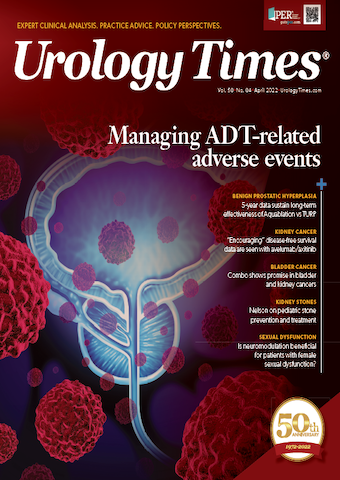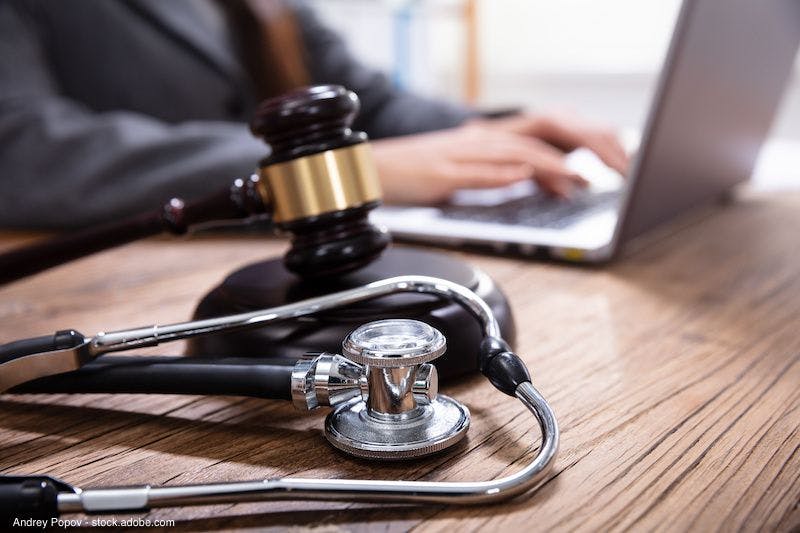Publication
Article
Urology Times Journal
Leuprolide tops urology spending for Medicare Part B drugs
Author(s):
Urologists are the principal drivers of utilization for 14 drugs.
Robert A. Dowling, MD

Physicians in many specialties continue to derive substantial revenue from administering drugs reimbursed by Medicare Part B, commonly referred to as “’buy and bill.” Under current rules, physicians are reimbursed based upon the average sales price of a drug plus 6%, adjusted for sequestration. In November 2021, the Centers for Medicare & Medicaid Services (CMS) formally rescinded a proposed rule—the Most Favored Nation Model—for Medicare Part B drugs and biologicals that would have indexed payments for Part B drugs to the reduced amounts paid by peer countries and tested a flat add-on fee to replace the current model of average sales price plus a percentage.
The policy concerns that led to this (now canceled) proposed measure still exist: growth in drug costs, growth in drug utilization, and a perception that the current reimbursement model encourages the use of more expensive drugs and overutilization. The top specialties paid under part B in 2019 were ophthalmology, hematology-oncology, rheumatology, internal medicine, family practice, neurology, and urology. In this article, I update the spending and costs for Medicare Part B Drugs commonly used by urologists in the office setting and explain why the information should matter to you.
CMS recently released detailed Part B drug spending data for 2016 to 2020, and total Medicare spending by provider and specialty for 2019.1,2 “Spending” in this context includes the estimated total costs, including deductible, coinsurance, and Medicare spending. Total spending in 2020 for
603 Part B drugs was $38.5 billion, up 3.4% from 2019; this is a much slower growth rate than from 2018 to 2019 which may be explained in part by reduced demand for services during the pandemic. One drug—pembrolizumab (Keytruda)—accounted for $3.5 billion (9.1%) of all spending in the program in 2020. Spending on any drug may increase because of increased utilization, increased price, or both.
According to the 2019 data, drug administration accounted for 13.9% of total Part B Medicare revenue in urology, and the specialty ranks 10th in percentage of Medicare revenue from Part B drugs. The top specialties earning revenue from buy-and-bill drugs in 2019 (Medicare revenue %) were hematology-oncology (61%), hematopoietic cell transplantation and cellular therapy (50%), hematology (49%), ophthalmology (43%), gynecological oncology (34%), and allergy/immunology (28%; Table2).

Twenty-one drugs commonly used by urologists account for less than 7% of total Medicare Part B drug spending, and spending in 2020 was down almost 3% for this subset of drugs compared with 2019. Of these 21 drugs commonly used in the urology office for Medicare beneficiaries, the drug with the largest 2020 total spend—as in 2019—was denosumab (Xgeva) ($1.63 billion); in 2020, utilization for denosumab actually decreased by 3% but spending per unit (price) increased 4.6%, resulting in higher overall spending. Denosumab spending has increased 4.1% per year over the last 5 years. The dominant specialty for denosumab is hematology-oncology, and urologists accounted for an estimated 4.5% of denosumab spending (eighth-ranked specialty).
Using estimates based on 2019 specialty data, the largest spend for urology in 2020 was leuprolide ($232 million) followed by sipuleucel-T (Provenge; $113 million), denosumab ($73 million), degarelix acetate ($15 million), and onabotulinumtoxinA (Botox; $14 million). Urologists were the principal specialty reimbursed by Medicare Part B in 2019 for all the androgen deprivation therapies as well as sipuleucel-T, BCG, dimethyl sulfoxide, and most of the testosterone replacement therapies. These are the drugs to watch.
Among the drugs used to treat non–muscle-invasive bladder cancer in 2020, mitomycin utilization dropped 21% from 2019 and the price dropped 38%, resulting in total spending of $8.5 million, down 51% from the prior year. Gemcitabine utilization was down 3.4%, the price was down 22%, and total spending down 24.5% compared with the previous year. Valrubicin spending was down 29%, driven entirely by decreased utilization. The price of BCG was relatively unchanged from 2019, and other year-on-year comparisons are not possible because the new Healthcare Common Procedure Coding System code was assigned midyear (2019).

In the androgen deprivation therapy market (Figure), leuprolide acetate was still the most commonly administered drug, with spending in 2020 of $285 million (down 5.5% from 2019). Urologists account for an estimated 81% of leuprolide spending. Over the past 5 years, growth in spending per dose of leuprolide acetate has decreased 1.75% annually as 2 manufacturers compete for position in this market. Utilization was down for all the drugs in this class except goserelin acetate (up 2.2%). Collective spending on these 5 drugs was $326 million, down 4.6% from the previous year.
In general, among these 21 drugs, those with 1 or 2 manufacturers have seen higher annual growth in spending per dose (a surrogate for price) and those with 3 or more manufacturers have seen lower or negative annual growth. Goserelin acetate and gentamicin have been notable exceptions to this rule over the past 5 years, with 10% annual growth over 5 years despite apparent competition among 3 or more manufacturers. BCG has a single manufacturer unable to meet current demand, yet the price has barely changed in the last 2 years.
The bottom line and why it matters
Urology practices continue to derive substantial revenue from administering “buy-and-bill” drugs, including from the Medicare Part B program (14% of revenue). Of 21 Part B drugs commonly used by urologists, total spending in 2020 increased for 5 drugs and decreased for 16 drugs over the previous year. Urologists were the principal prescribers for 14 of 21 common drugs they administer. Urologists should understand that spending in the Part B program continues to attract the attention of CMS and other payers; although reimbursement to the specialty is still only a fraction (1.5%) of the total Part B drug spend by CMS, urologists are the principal drivers of utilization for 14 drugs, including some expensive agents.
References
1. Medicare physician & other practitioners – by provider and service. Centers for Medicare & Medicaid Services. Updated August 31, 2021. Accessed March 19, 2022. https://bit.ly/3N8i5sw
2. Medicare Part B spending by drug. Centers for Medicare & Medicaid Services. Updated January 27, 2022. Accessed March 19, 2022. https://bit.ly/3JxWmIg
































